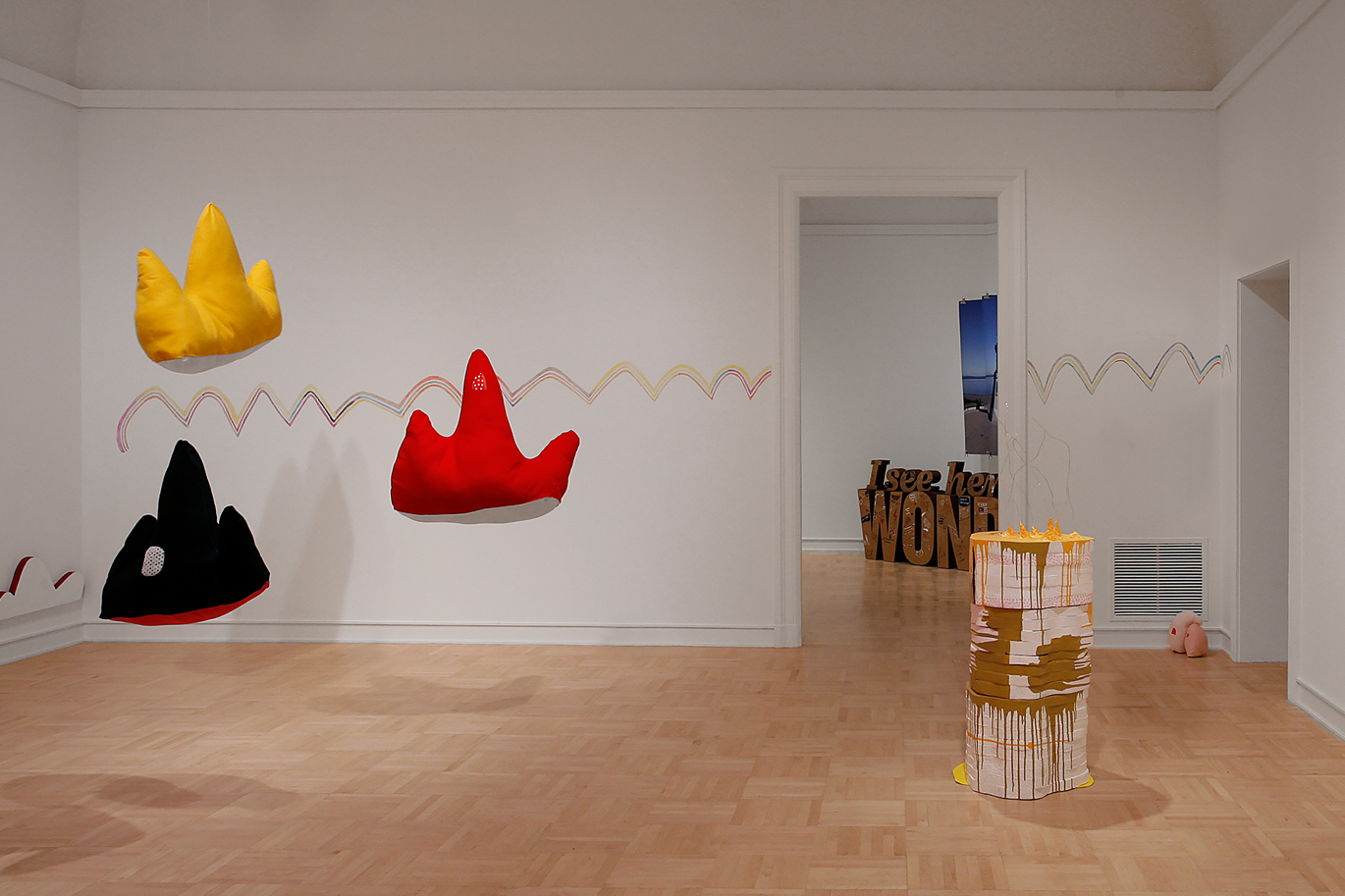Throughout summer quarter, twenty undergraduates in the College of Arts & Sciences worked with a teaching team of five to explore the topic of creating alternate worlds during the Summer Institute in the Arts & Humanities (SIAH). There were lectures, seminars, small group critiques, workshops, and tutorial sessions. They read and discussed theoretical readings and learned techniques in world building that drew from design, art, literature, and the sciences. Then students created their own worlds. At the end of the quarter, there was an exhibition hosted by Seattle design firm Artefact followed the next day by a symposium with presentations by each student.
Five of the students and two of the teaching team were from the School. We asked them to write about their experience.
Audrey Desjardins
Assistant Professor, Interaction Design; teaching team
The experience we shared in the SIAH this summer is hard to describe with sentences, or even with words. My mind is still buzzing with concepts like post-anthropocentrism, the virtual and the actual, material speculation, afrofuturism, fungily thoughts, alternate histories, and positionality in world-building. My body is still feeling the bonsais we met, the pockets we sewed, the natural mold and the crystals that were grown, and the energy of the other humans we exchanged ideas with. SIAH is a really unique opportunity for undergraduate students to jump in, to take a big leap, to explore something they feel truly drawn to, and, in doing so, they pull the teaching team right with them — inviting us to visit other worlds alongside them. It feels like this summer I expanded my design knowledge with new ways of conceptualizing how we might (or should) imagine alternate worlds, in turn influencing the world we all share. By broadening theoretical frameworks and modes of knowing, I feel more equipped to reframe how I teach design within the Division of Design, and I feel a responsibility to share with students the plurality of views we must consider as designers.
Heidi Biggs
MDes 2019; teaching team
SIAH solidified for me how in creative research practices, making and theory powerfully assist one another. I really felt the type of research being done at SIAH was radical, as "building alternate worlds" took a step beyond critique and into critical making, not only saying what is but then giving a new way forward, or a new past, or a new parallel, in ways that shift the fabric of our own world. I was inspired by each student's conviction as they created and interrogated a world they were creating — and then were reciprocally shaped back in equal measure. Wild and fun projects expressed abstract and complex concepts about things such as mass incarceration, algorithmic entanglements, biology, and the nature of truth and histories. Making an object, or a thing, allowed students to encounter a different type of knowledge production and a material push-back (making is hard!), which opened the door to unexpected insights, twists, turns, and lively interactions. I am so grateful to have witnessed the birth of a galaxy of new worlds and shared a space with such bright and rigorous minds all summer!
Ioan Butiu
BDes 2019, Industrial Design
There are a lot of possible worlds out there. How do we choose which one to build? This year's SIAH explored world building as a tool for speculating on new ways of being. Our diverse, multidisciplinary cohort was made up of inspiring and passionate students who constantly challenged each other with different perspectives. The teaching team was dedicated and enthusiastic, constantly forcing us out of our comfort zones. Through this experience, I gained a new understanding of how to combine theory and practice in creative work. The lack of constraints was daunting at times, but the supportive atmosphere made SIAH a great space for creative exploration. Overall, this experience was a fitting culmination to my time at UW.
Rachel Fazio
BDes student, Visual Communication Design, and BA student, Gender, Women & Sexuality Studies
Integrating philosophical theories of materialism and nature helped me to better produce more meaningful designs on a broad scale. My peers in SIAH are all masters of very specific and different trades, aiding in perspective forming within the program and in the future. I was consistently overwhelmed with how much knowledge I was surrounded by. This interdisciplinary environment was refreshing and stretched the scale of my capabilities as a designer. SIAH professors are extremely validating and pushed my learning to weird and cool places I had never experienced. This program was pivotal in understanding how to work through an obsession with perfectionism in my own work. This program made me feel more grounded in embodied experiences as a designer, helping me to better verbalize and explain my thoughts.
Jena McWhirter
BDes student, Interaction Design
During the SIAH, I joined a cohort of imaginative students including scholars, makers, and designers. Together we each created an alternative world through researching, making, and writing. This process was immersive! I learned how to apply theory into my design process, to conduct research in an exploratory way, and to form my own views. I loved how much time was given for us to read, learn, and absorb new ideas. We were encouraged to explore new materials and techniques. I personally experimented with natural dyeing, Arduino, and e-textiles. When we began making, I had an incredibly strong foundation to build upon. One challenge I faced was narrowing down the scope of my worldview. I was so excited about the theory that it was hard to pick an initial focus. Keeping an in depth process journal helped to organize my decision making. Overall, I highly recommend the Summer Institute. It is hard to put into words how supportive and enthusiastic the faculty members were. I felt energized with inspiration throughout the summer, and it was a truly valuable experience in both academic and personal growth.


